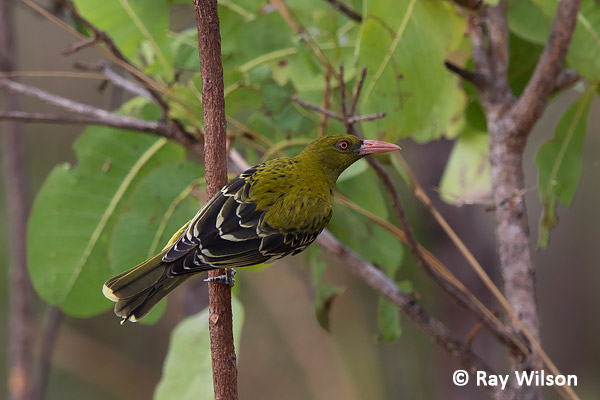
- Home
- Photography Tours
- Diary / Blog
- Galleries
- Foreign Trips
- Tasmania 2016
- NE Queensland 2016
- Western Alps 2016
- NE Spain 2016
- Australia's Wet Tropics 2015
- Australia's Top End 2015
- SW Australia 2015
- Switzerland 2015
- Andalucia 2015
- Belize 2015
- Australia 2014
- Switzerland 2014
- Belize 2014
- Bahama Islands 2014
- Switzerland 2013
- Ecuador 2012-2013
- Florida 2011-2012
- Vancouver Island 2011
- Australia 2010
- Peru 2008
- Bulgaria 2007
- Lesvos 2006
- California 2006
- New Zealand 2005
- Extremadura 2005
- Goa, India 2004
- The Gambia 2003
- About
October 2015
The "Top End" of Australia
Part 3: Kakadu NP (East Alligator River Section)
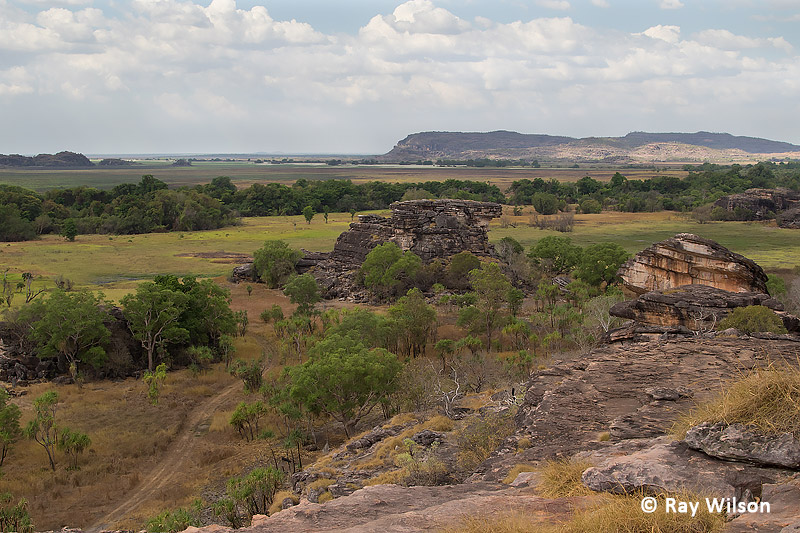
view from Nadab lookout
With almost 20,000km2 of land contained within its borders, Kakadu is the largest national park in Australia...approximately the same size as the whole of Israel or half of Switzerland!
Most of the park is inaccessible to casual visitors but there are several points of easy access where it is possible to sample most of the park's habitats without the need for a 4WD vehicle or special permission. This, and the following couple of pages, cover the areas I found most productive during the 2 weeks I spent in the park.
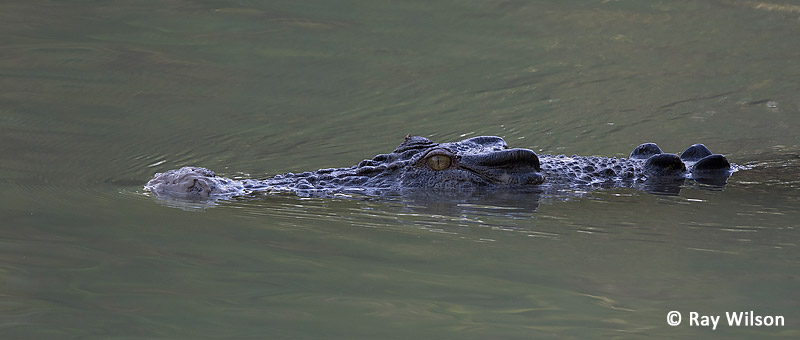
Estuarine Crocodile (Crocodylus porosus)
Over 10,000 crocodiles live in the park and a good place to safely watch them is from the viewing platform at Cahill's Crossing in the the East Alligator section of the park, about 40km north of the Jabiru township. The Estuarine Crocodile, or Saltwater Crocodile as it is also frequently known, is the world's largest living reptile and can reach lengths of over 6m (20ft) and weigh over 1300kg (3000lbs). Due to their large size, Estuarine Crocodiles do tend to view humans as potential prey so extreme care should be taken in any areas where crocodiles are present and you should stay away from the water's edge and remain vigilant at all times whenever hiking on trails near water.
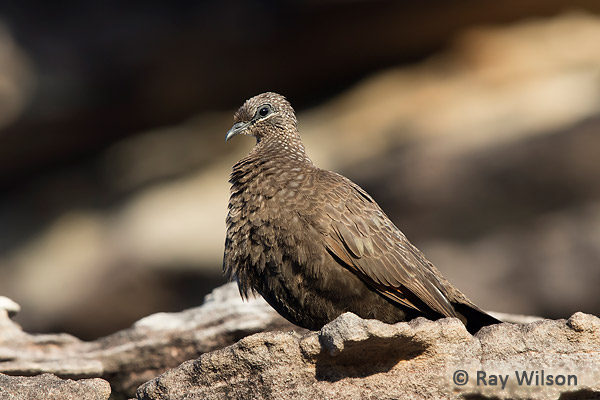
Chestnut-quilled Rock-pigeon (Petrophassa rufipennis)
Most of the trails at East Alligator are interconnected and if you are staying at the campground it is possible to walk everywhere you want to go without having to drive anywhere (which is what I did). The only trouble with this is you need to carry an awful lot of water with you as the climate in October is very hot and humid. It wasn't unusual for me to go through over 3 litres of water in just a half-day hike!
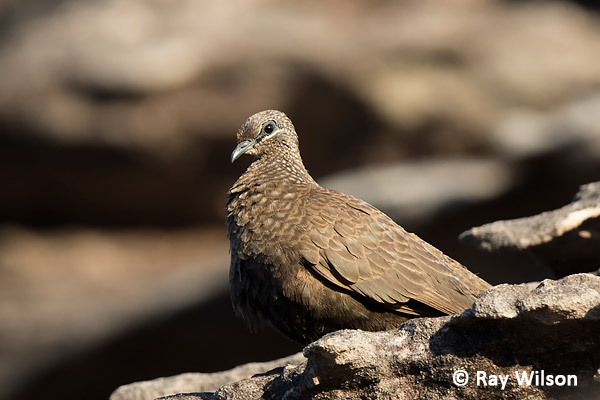
Chestnut-quilled Rock-pigeon (Petrophassa rufipennis)
The sandstone outcrops along the Bardedjilidji walk are prime habitat for Chestnut-quilled Rock-pigeon and small groups of these well camouflaged pigeons can often be spotted among the rocks or coming down to the pools or creeks for a drink in the early morning.

Rainbow Pitta (Pitta iris)
Rainbow Pittas were frequently heard, and occasionally seen, in the monsoon forests bordering the river.
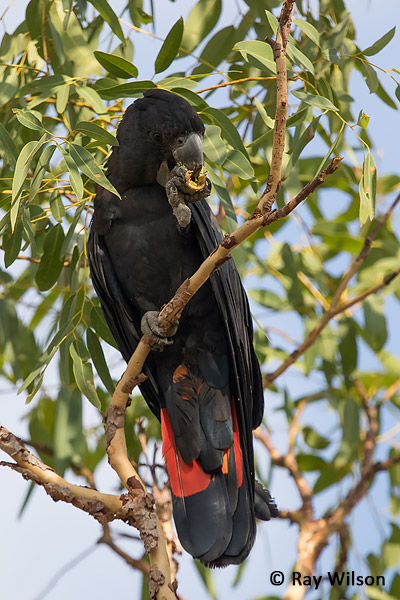 male |
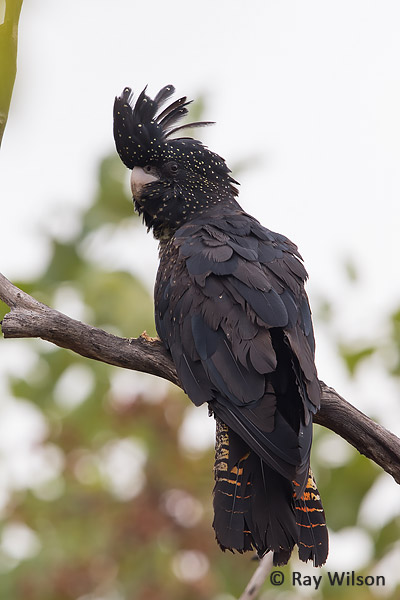 female |
Red-tailed Black Cockatoo (Calyptorhynchus banksii)
Around the Merl campsite, flocks of Red-tailed Black Cockatoos were common and could often be seen feeding on fruits in the trees above my campervan.
Green Oriole (Oriolus flavocinctus)
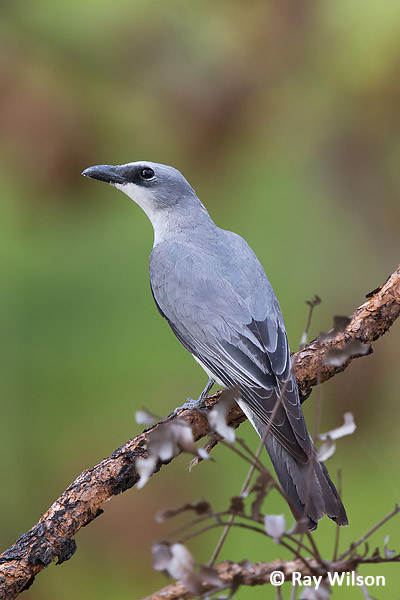
White-breased Cuckoo-shrike (Coracina papuensis)

female Rufous Whistler (Pachycephala rufiventris)
During a brief, but torrential rainstorm (the only rain I experienced during the whole of October), I came across a Little Eagle spreading its wings and fluffing up its feathers to get the maximum washing effect from the rain.
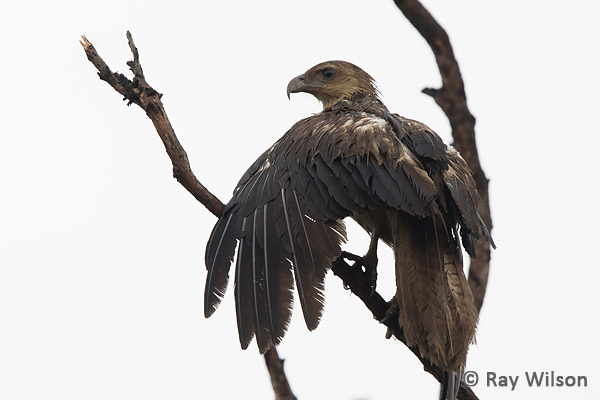
Little Eagle (Hieraaetus morphnoides) taking a shower during a heavy rainstorm
Nearby, at Ubirr, there are some excellent examples of aboriginal cave art, some of which dates back 20,000 years!
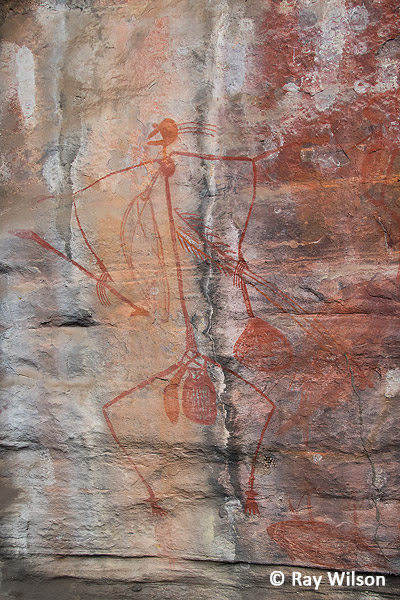 Cave painting of a hunter |
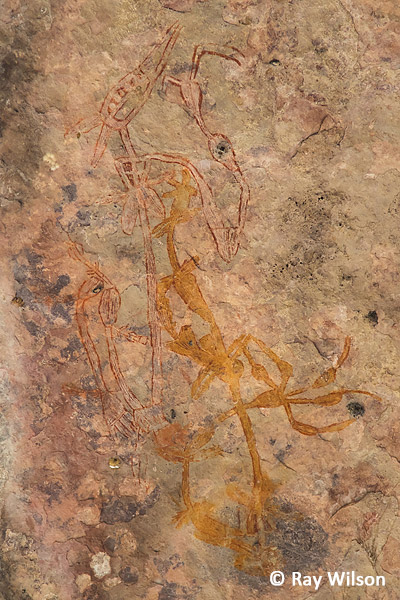 Cave painting of a Mimi spirit |
Ray Wilson owns the copyright of all images on this site.
They may not be used or copied in any form without prior written permission.
raywilsonphotography@googlemail.com
